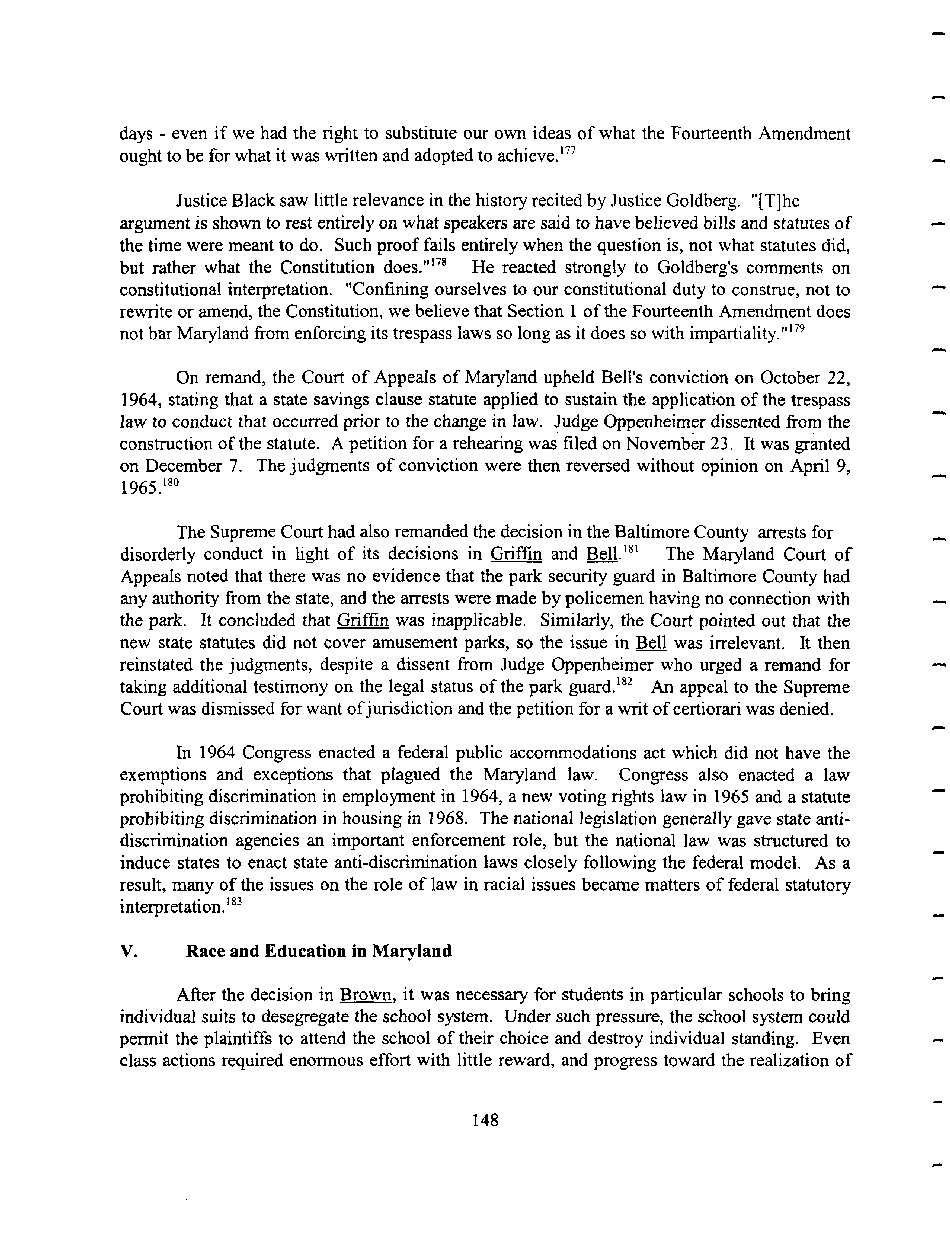|
days - even if we had the right to substitute our own ideas of what the Fourteenth Amendment
ought to be for what it was written and adopted to achieve.177
Justice Black saw little relevance in the history recited by Justice Goldberg. "[T]he
argument is shown to rest entirely on what speakers are said to have believed bills and statutes of
the time were meant to do. Such proof fails entirely when the question is, not what statutes did,
but rather what the Constitution does."178 He reacted strongly to Goldberg's comments on
constitutional interpretation. "Confining ourselves to our constitutional duty to construe, not to
rewrite or amend, the Constitution, we believe that Section 1 of the Fourteenth Amendment does
not bar Maryland from enforcing its trespass laws so long as it does so with impartiality."179
On remand, the Court of Appeals of Maryland upheld Bell's conviction on October 22,
1964, stating that a state savings clause statute applied to sustain the application of the trespass
law to conduct that occurred prior to the change in law. Judge Oppenheimer dissented from the
construction of the statute. A petition for a rehearing was filed on November 23. It was granted
on December 7. The judgments of conviction were then reversed without opinion on April 9,
1965.180
The Supreme Court had also remanded the decision in the Baltimore County arrests for
disorderly conduct in light of its decisions in Griffin and Bell.181 The Maryland Court of
Appeals noted that there was no evidence that the park security guard in Baltimore County had
any authority from the state, and the arrests were made by policemen having no connection with
the park. It concluded that Griffin was inapplicable. Similarly, the Court pointed out that the
new state statutes did not cover amusement parks, so the issue in Bell was irrelevant. It then
reinstated the judgments, despite a dissent from Judge Oppenheimer who urged a remand for
taking additional testimony on the legal status of the park guard.182 An appeal to the Supreme
Court was dismissed for want of jurisdiction and the petition for a writ of certiorari was denied.
In 1964 Congress enacted a federal public accommodations act which did not have the
exemptions and exceptions that plagued the Maryland law. Congress also enacted a law
prohibiting discrimination in employment in 1964, a new voting rights law in 1965 and a statute
prohibiting discrimination in housing in 1968. The national legislation generally gave state anti-
discrimination agencies an important enforcement role, but the national law was structured to
induce states to enact state anti-discrimination laws closely following the federal model. As a
result, many of the issues on the role of law in racial issues became matters of federal statutory
interpretation.183
V. Race and Education in Maryland
After the decision in Brown, it was necessary for students in particular schools to bring
individual suits to desegregate the school system. Under such pressure, the school system could
permit the plaintiffs to attend the school of their choice and destroy individual standing. Even
class actions required enormous effort with little reward, and progress toward the realization of
148
�
|

